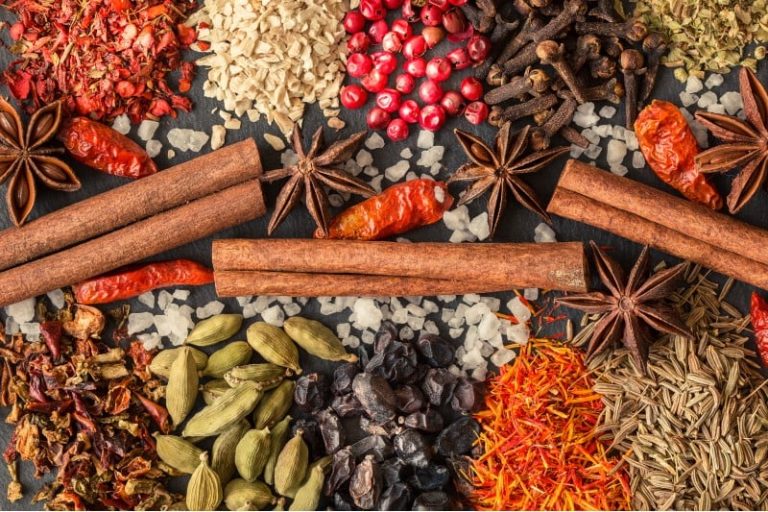When it comes to culinary traditions, few cultures can rival the rich and diverse tapestry of flavors found in Indian cuisine. At the heart of this gastronomic adventure lie the vibrant and aromatic Indian spices. For centuries, these spices have not only added depth and complexity to Indian dishes but have also played a significant role in the country’s history, trade, and cultural identity. Let’s embark on a journey to discover the enchanting world of Indian spices and understand why they are cherished by food enthusiasts around the globe.
- Turmeric: Known as the “golden spice,” turmeric is a staple in Indian cooking. Its bright yellow color adds vibrancy to dishes, while its warm and slightly bitter flavor imparts a distinct taste. Turmeric is also celebrated for its health benefits and has been used in Ayurvedic medicine for centuries. It contains curcumin, a compound with powerful anti-inflammatory and antioxidant properties.
- Cumin: Cumin seeds are widely used in Indian cuisine and are known for their warm, earthy, and slightly nutty flavor. They are a key component in spice blends such as garam masala and curry powder. Cumin seeds can be used whole or ground, adding depth to curries, rice dishes, and even beverages like spiced tea.
- Coriander: Coriander seeds and leaves are integral to Indian cooking. The seeds have a slightly citrusy and floral flavor, while the leaves, known as cilantro, provide a fresh and herbaceous taste. Coriander seeds are often used in spice mixes, marinades, and pickles, while cilantro leaves are used as a garnish or added to chutneys and sauces.
- Cardamom: Cardamom, with its distinct aroma and flavor, is often referred to as the “queen of spices.” It has a sweet, floral, and slightly spicy taste that lends a unique character to both sweet and savory dishes. Cardamom pods are commonly used in desserts, tea, rice dishes, and curries. Ground cardamom is also used in baking and adds a delightful fragrance to cakes and cookies.
- Cloves: Cloves are intensely aromatic and have a warm, sweet, and slightly bitter taste. These dried flower buds are often used whole or ground in Indian cuisine. Cloves are prominent in spice blends like garam masala and are used in savory dishes, rice preparations, and pickles. They also add depth to desserts and are often paired with cinnamon and cardamom.
- Fenugreek: Fenugreek seeds and leaves have a distinct flavor reminiscent of maple syrup, with a slightly bitter edge. The seeds are used in spice blends, while the leaves, known as methi, are used as an herb in curries and vegetable dishes. Fenugreek is also believed to have medicinal properties and is used in traditional remedies for various ailments.
For more information click here MDH Indian spices.

